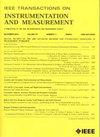基于纯脉冲电压的电缆宽带阻抗谱测量方法
IF 5.6
2区 工程技术
Q1 ENGINEERING, ELECTRICAL & ELECTRONIC
IEEE Transactions on Instrumentation and Measurement
Pub Date : 2025-06-18
DOI:10.1109/TIM.2025.3580901
引用次数: 0
摘要
宽带阻抗谱(BIS)的应用已成为定位电缆内部微小缺陷的一种高性能方法。BIS研究的主要重点是改进分析频谱的算法,对其获取的关注较少。BIS通常使用扫频阻抗分析仪(IAs)或矢量网络分析仪(VNAs)获得,这通常是昂贵的。与扫频采集方法相比,本文提出了一种经济有效的基于脉冲电压的方法,在电缆连接采集系统和断开采集系统两种配置下,仅依靠测量时域脉冲电压而不测量电流来获取电缆的BIS。为了增强其在实际场景中的适用性,提出了两种校正方法,以减轻外部延长电缆和内部连接电缆的影响。实验结果表明,该方法可靠地获取了电缆的BIS,与阻抗分析仪的结果相比,归一化均方根误差(NRMSE)小于3%。本文章由计算机程序翻译,如有差异,请以英文原文为准。
A Pure Pulse Voltage-Based Method for Broadband Impedance Spectrum Measurement of Cables
The application of broadband impedance spectrum (BIS) has become a high-performance method for localizing minor defects within cables. The primary focus of BIS research has been on improving algorithms for analyzing the spectrum, with less attention given to its acquisition. BIS is typically obtained using frequency-sweeping impedance analyzers (IAs) or vector network analyzers (VNAs), which are often costly. In contrast to frequency-sweeping acquisition methods, this article proposes a cost-effective, pulse voltage-based method to acquire the BIS of cables by relying exclusively on measuring time-domain pulse voltages, without measuring current, under two configurations: with the cable connected to the acquisition system and with it disconnected. To enhance its applicability in practical scenarios, two correction methods are proposed to mitigate the influence of both external extension cables and internal connection cables. The experimental results demonstrate that the proposed method reliably acquires BIS of cables, with a normalized root mean square error (NRMSE) of less than 3% compared with the results obtained by the impedance analyzer.
求助全文
通过发布文献求助,成功后即可免费获取论文全文。
去求助
来源期刊

IEEE Transactions on Instrumentation and Measurement
工程技术-工程:电子与电气
CiteScore
9.00
自引率
23.20%
发文量
1294
审稿时长
3.9 months
期刊介绍:
Papers are sought that address innovative solutions to the development and use of electrical and electronic instruments and equipment to measure, monitor and/or record physical phenomena for the purpose of advancing measurement science, methods, functionality and applications. The scope of these papers may encompass: (1) theory, methodology, and practice of measurement; (2) design, development and evaluation of instrumentation and measurement systems and components used in generating, acquiring, conditioning and processing signals; (3) analysis, representation, display, and preservation of the information obtained from a set of measurements; and (4) scientific and technical support to establishment and maintenance of technical standards in the field of Instrumentation and Measurement.
 求助内容:
求助内容: 应助结果提醒方式:
应助结果提醒方式:


